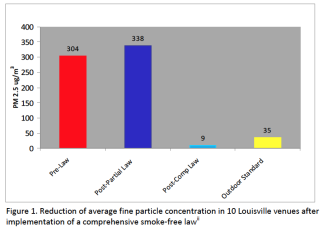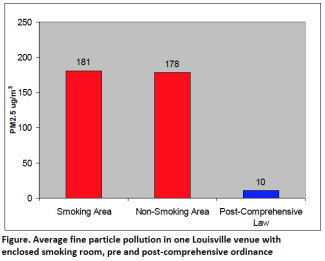- There is no safe level of exposure to secondhand smoke.i Comprehensive smoke-free laws that cover all workplaces and all public places with no exemptions protect all workers and members of the public from the toxic poisons in secondhand smoke.
- Exemptions are often proposed by opponents to smoke-free laws with the overt intent of compromise. In reality, exemptions create confusion and enforcement challenges, an unlevel playing field for businesses, potential for legal challenges, and they leave workers unprotected from the hazards of secondhand smoke.
- As an enforcement official in Louisville said, “…the governing body should plan for a future re-write if they allow exemptions. Go ahead and bite the bullet now for the sake of public and employee health.”
Exemptions are problematic because they:
- Create Confusion and Make Enforcement a Challenge
- Create an Uneven Playing Field: Business Owners Say that is Not Fair
- Provide an Avenue for Legal Challenges
- Leave Workers Unprotected from Secondhand Smoke


